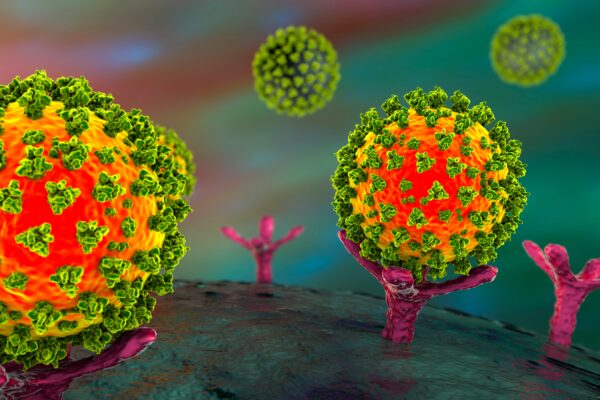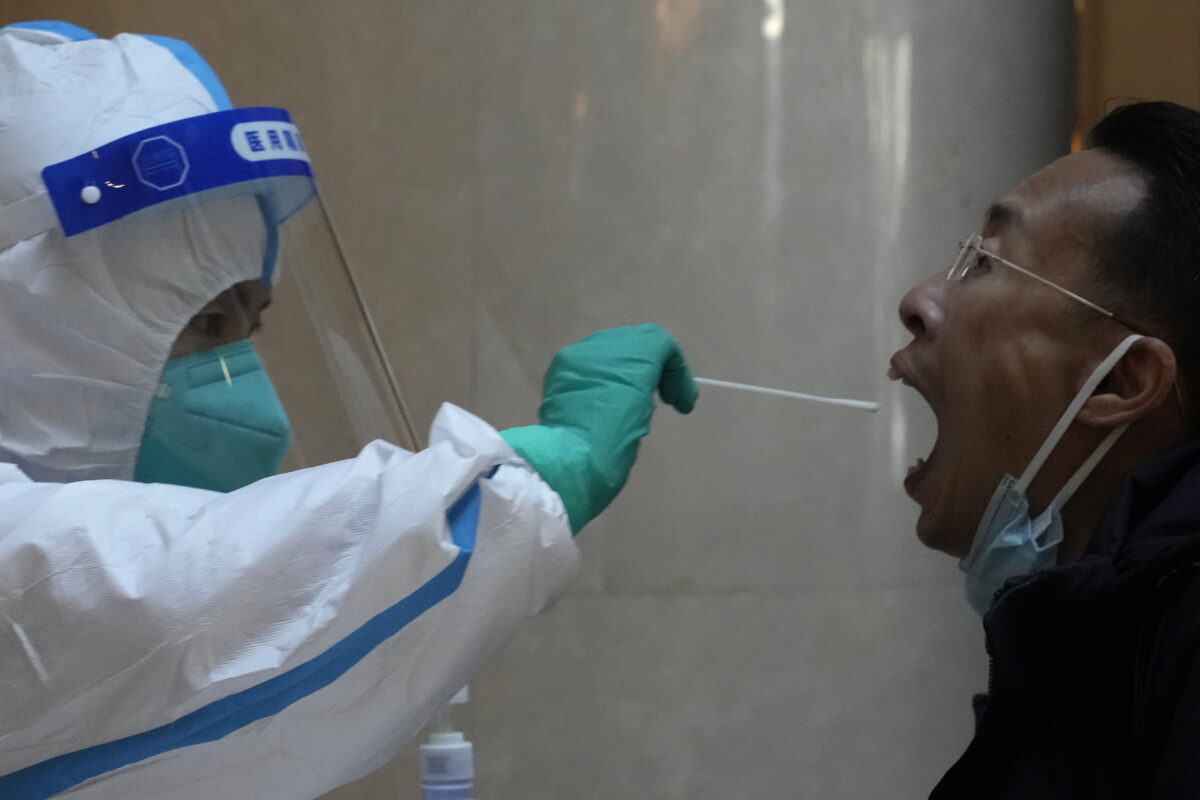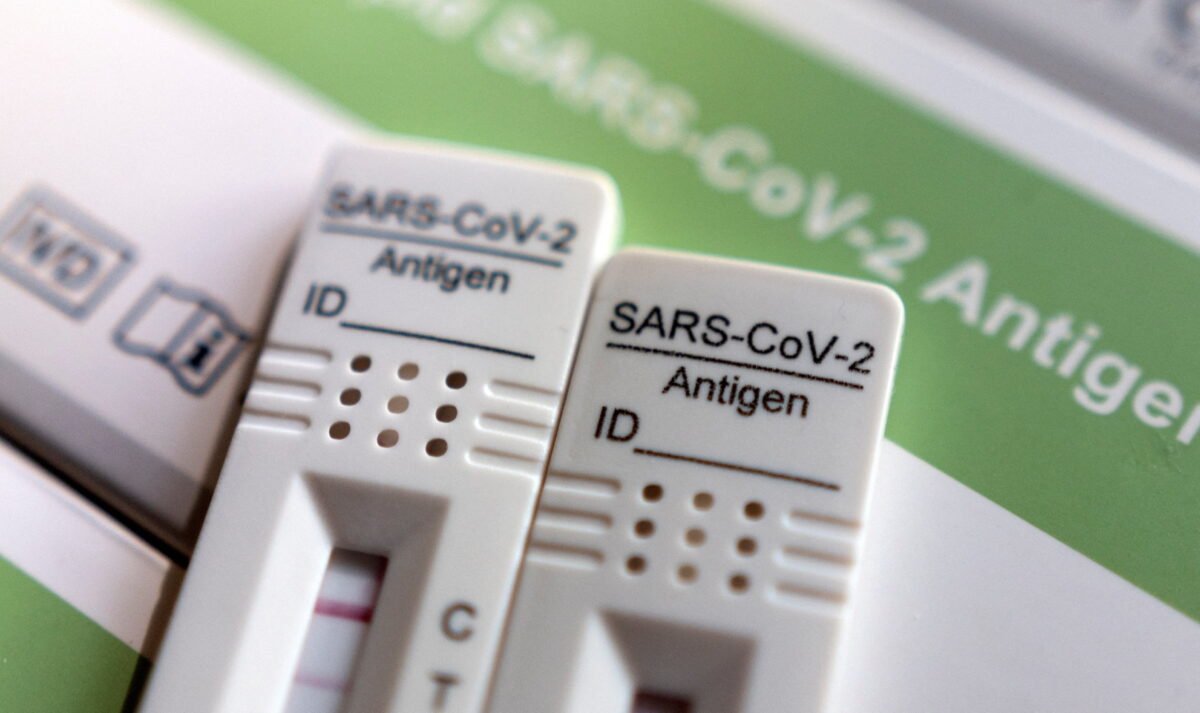Study Infecting Patients With COVID-19 Finds ‘Very Few Emissions’ in Asymptomatic Cases
Emissions of COVID-19 among asymptomatic individuals are relatively low, according to the findings of a new experimental study that intentionally infected patients.
The study was published in the weekly peer-reviewed The Lancet medical journal on June 9.
The research was conducted at the quarantine unit at the Royal Free London NHS Foundation Trust in London, UK, between March 6 and July 8, 2021, with the aim of understanding exactly when infected individuals are generally contagious and how to detect or predict contagiousness in order to reduce transmission in future pandemics.
As part of the study, researchers recruited 36 healthy participants (10 female and 26 male) aged 18–30 who were unvaccinated against COVID-19 and were not previously known to have been infected with the virus.
Researchers then infected the participants with the “pre-alpha wild-type SARS-CoV-2,” a strain of coronavirus that causes COVID-19, by spraying viral particles up their noses, and quarantining them in individual “negative pressure rooms” for a minimum of 14 days, conducting nose and throat swabs daily.
Viral emissions were also collected from the air and the surrounding environment in the room, such as the surfaces on bedside cabinets, on a daily basis using an air sampler. All of the samples were then tested for COVID-19 using PCR tests, lateral flow antigen tests, and other testing devices.
Participants, meanwhile, self-reported their symptoms three times a day.
A total of 18 of the participants became infected with the virus, researchers said, adding that they developed mild-to-moderate symptoms of COVID-19 within just days after their incubation period began.

Study Findings
Specifically, viral RNA was detected in 25 percent of 252 air samples from 16 participants between 3 and 14 days post-inoculation; 43 percent of the 252 mask samples from 17 participants between 2 and 14 days after inoculation; and 27 percent of the 252 hand swabs from 16 participants between 3 and 13 days after inoculation.
In all 18 infected participants’ rooms, viral RNA was detected in 371 (29 percent) of 1,260 surface swabs, including 74 (29.4 percent) of 252 overbed table swabs, 62 (24.6 percent) of 252 bed frame swabs, 80 (31.7 percent) of 252 bedside table swabs, 68 (27 percent) of 252 television remote control swabs, and 87 (34.5 percent) of 252 bathroom swabs, between 2 and 14 days after inoculation.
Of the 18 study participants who developed infections, researchers found that males emitted a large proportion of the airborne virus—approximately 86 percent—on just one or two days of quarantine, while the majority of viral emissions occurred during the symptomatic period.
They also found that “very few emissions occurred before the first reported symptom (7 percent) and hardly any before the first positive lateral flow antigen test (2 percent),” meaning that emissions among asymptomatic respondents into the air and environment were low.
Those findings are in sharp contrast to health officials’ warnings throughout the pandemic that individuals who do not display symptoms of COVID-19 could transmit the virus.
Previous studies have found similar results.
However, the U.S. Centers for Disease Control and Prevention still recommends that individuals who were infected but asymptomatic isolate for at least five days after testing positive for the virus.

‘No Real Way to Predict’ COVID-19 Spreaders
“Even within this small cohort and highly controlled study design, we observed heterogeneity in the timing, extent, and routes of viral emissions,” the researchers wrote. “We observed short windows of high airborne viral emission, with two (11 percent) infected participants contributing 86 percent of the airborne virus over three individual time points, giving support to the phenomenon of super spreading individuals or events.”
“However, the three high emission timepoints were not associated with greater human marker (18S rRNA) and the highest emitter of the cohort did not produce especially high outputs of the human marker,” the researchers continued.
“Predicting or identifying people who might be high virus emitters, perhaps even before they are infected, is of interest because they could be prioritized for interventions to block transmission. Our analysis suggests both host (eg, sex, BMI, mechanics of breathing) and viral factors (eg, timing, extent, or anatomical site of virus) might contribute to overdispersion,” they concluded.
Infectious disease researcher Anika Singanayagam at Imperial College London, a co-author of the paper, told Nature that the findings are similar to those that she and her colleagues have observed with naturally acquired infections.
Commenting on the study findings, Dr. Monica Gandhi, head of HIV, Infectious Diseases, and Global Medicine at UCSF Health, said on Twitter that they show there is “no real way to predict who is most likely to have high nasal viral loads and able to spread COVID more efficiently; makes it even harder to control.”
Gandhi added that the findings show why it is important that individuals acquire immunity.
Still, the researchers plan to conduct further work to understand the findings, including similar studies with more recent COVID-19 variants.
“Nonetheless, our findings support measures such as hand washing and surface cleaning in close indoor settings where there has been a case of COVID-19, as one of a combination of non-pharmaceutical interventions to reduce transmission risk,” they added.




